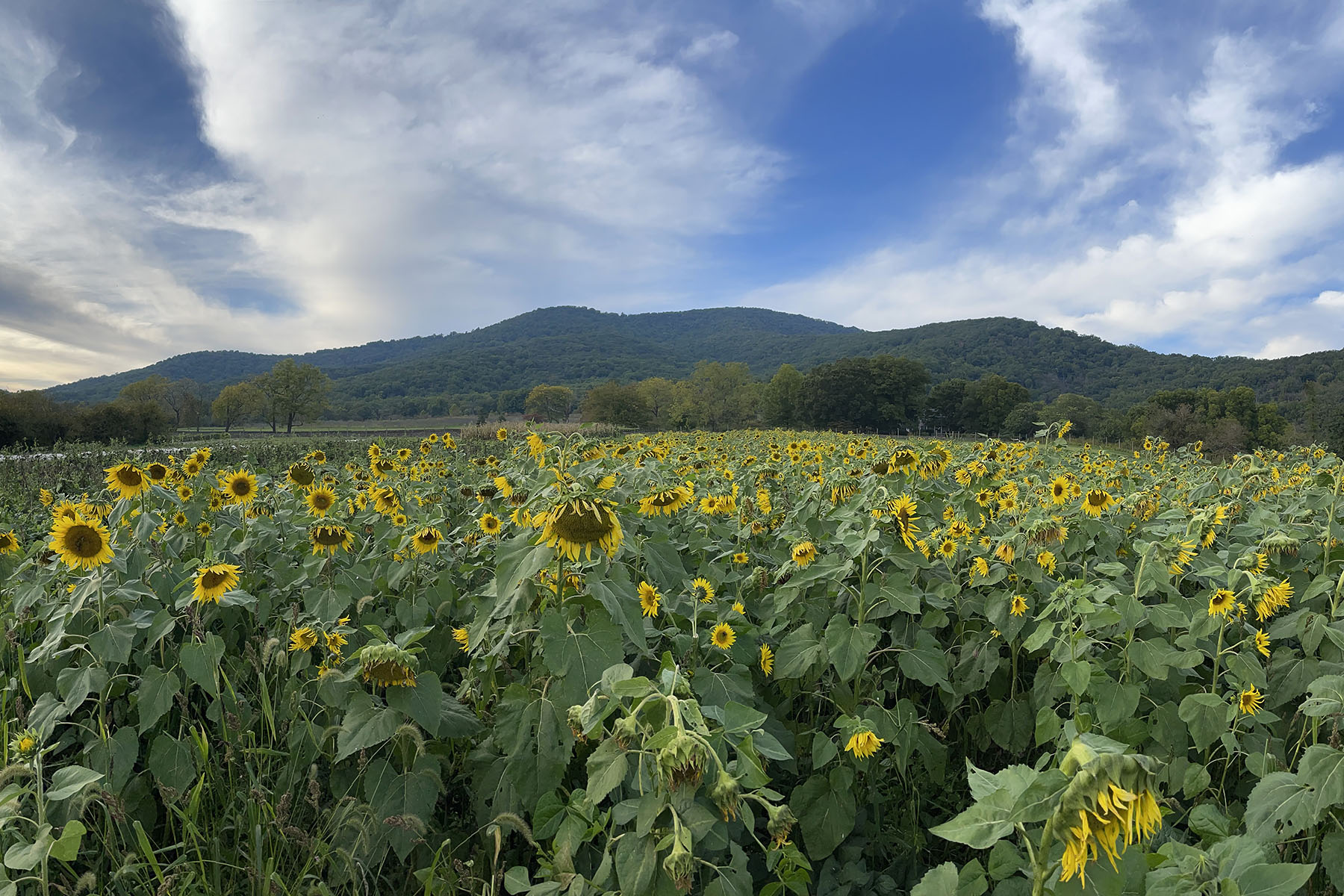
Cover Crops
The Farm at Sunnyside places high value on the ability of cover crops to encourage good soil health, prevent erosion, build organic matter and sequester carbon. We grow a wide diversity of cash crops, but we also plan our rotation to include a large mix of cover crops throughout the season. While there are many obvious benefits that this practice provides – for example, the ability of legumes such as clover to fix nitrogen – we are also using cover crops like sunflowers and North American native grasses to provide habitat and food for our bee and bird populations.
Crop Rotation
We believe strongly in growing a wide variety of crops not only to supply our customers with a wide selection but also because increased diversity in our agricultural fields contributes to a healthier farm ecosystem. We rotate crop families in our fields, both cash and cover crop, year to year so that pests and diseases do not stay in one area. Also, by rotating crops that have different nutrient needs from the soil, we are better able to maintain long term soil health and fertility.

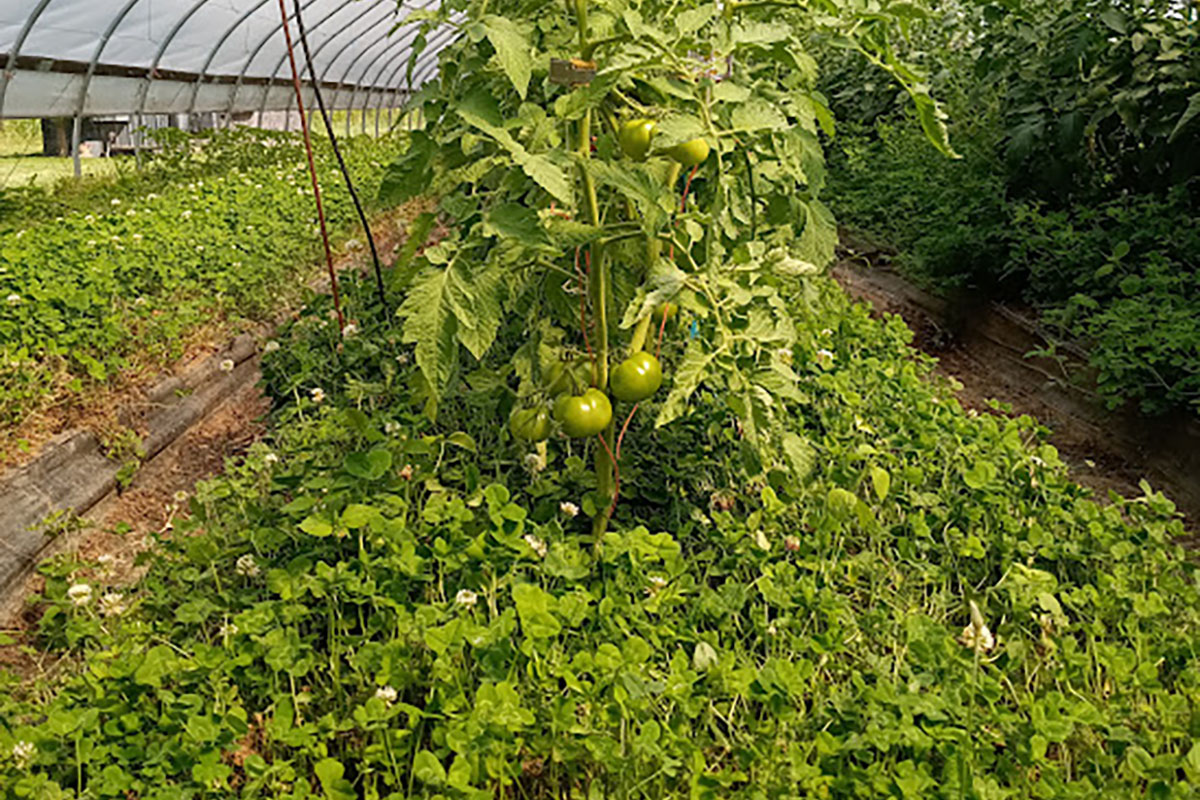
Green Mulching
One of our goals is to minimize the use of plastic mulches in our fields, which is often seen as the standard in organic production, used primarily to eliminate weeds. Soil is a living ecosystem filled with microbes, fungi, and insect species that provide vital natural functions for the soil including nutrient cycling, breaking down plant residue, stimulating plant growth, and many others. Plastic mulches can have detrimental effects on soil life by creating a localized environment that soil dwelling organisms simply can’t survive in, and this leads to a greater need to apply fertilizers to make up for losing the benefits of living microorganisms. As an alternative, wherever possible we have been using a green mulching system where we plant our vegetables directly into low growing cover crops. Most of our crop plants will quickly outgrow this ground cover which, in turn, helps suppress weeds, adds nitrogen to the soil, helps prevent erosion, retains soil moisture, and provides a living space for beneficial and predatory insects.
Smart Tillage
As vegetable farmers, we often use soil tillage to prepare our fields and it’s always a bit of a trade off, just because mechanical tillers allow us to grow more food but they also do a lot of physical damage to the soils. The way we like to think of what’s happening in the soil is that, in nature, bare soil doesn’t exist. Wherever plants want to grow, plants will be growing, and the microbes in the soil have never evolved to deal with factors like direct sunlight or being mechanically buried. How we try to balance our production is to view tilling our soils as a necessity for a large vegetable farm and not a convenience to make the work easier. We only till when we need to, only the spaces we are planting, and we only do it under ideal weather conditions. In the long term, it’s not just nice to treat our soils properly but, because they do so much work, it’s efficient.
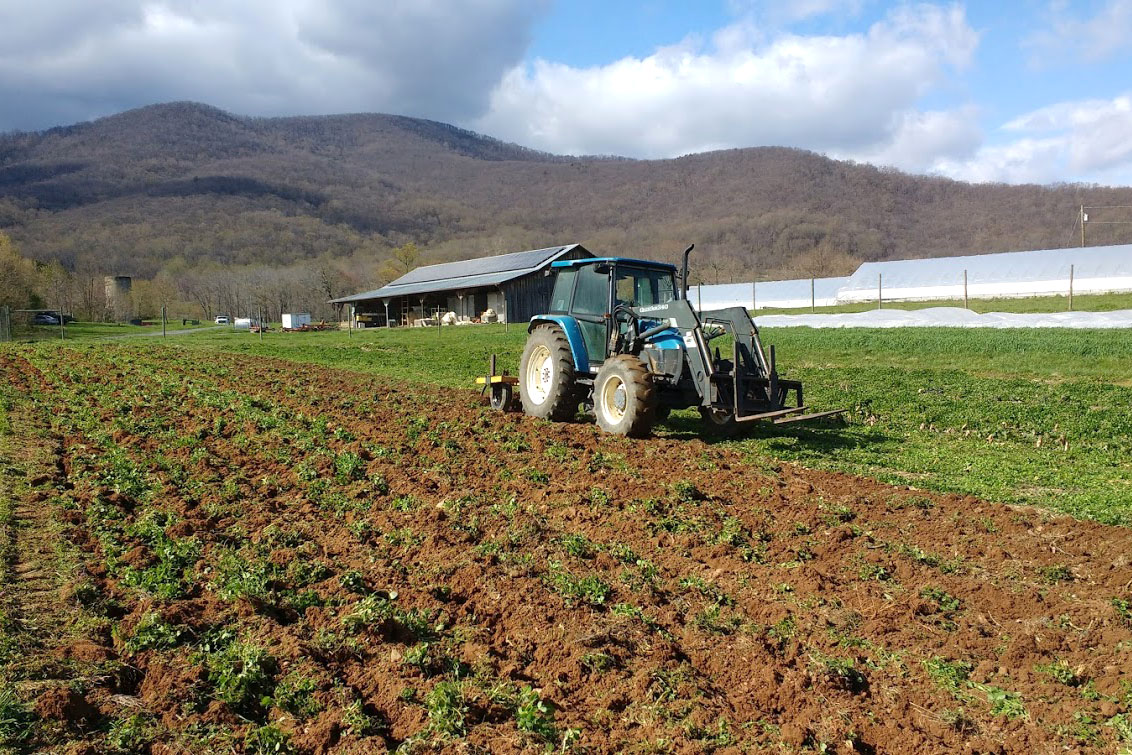
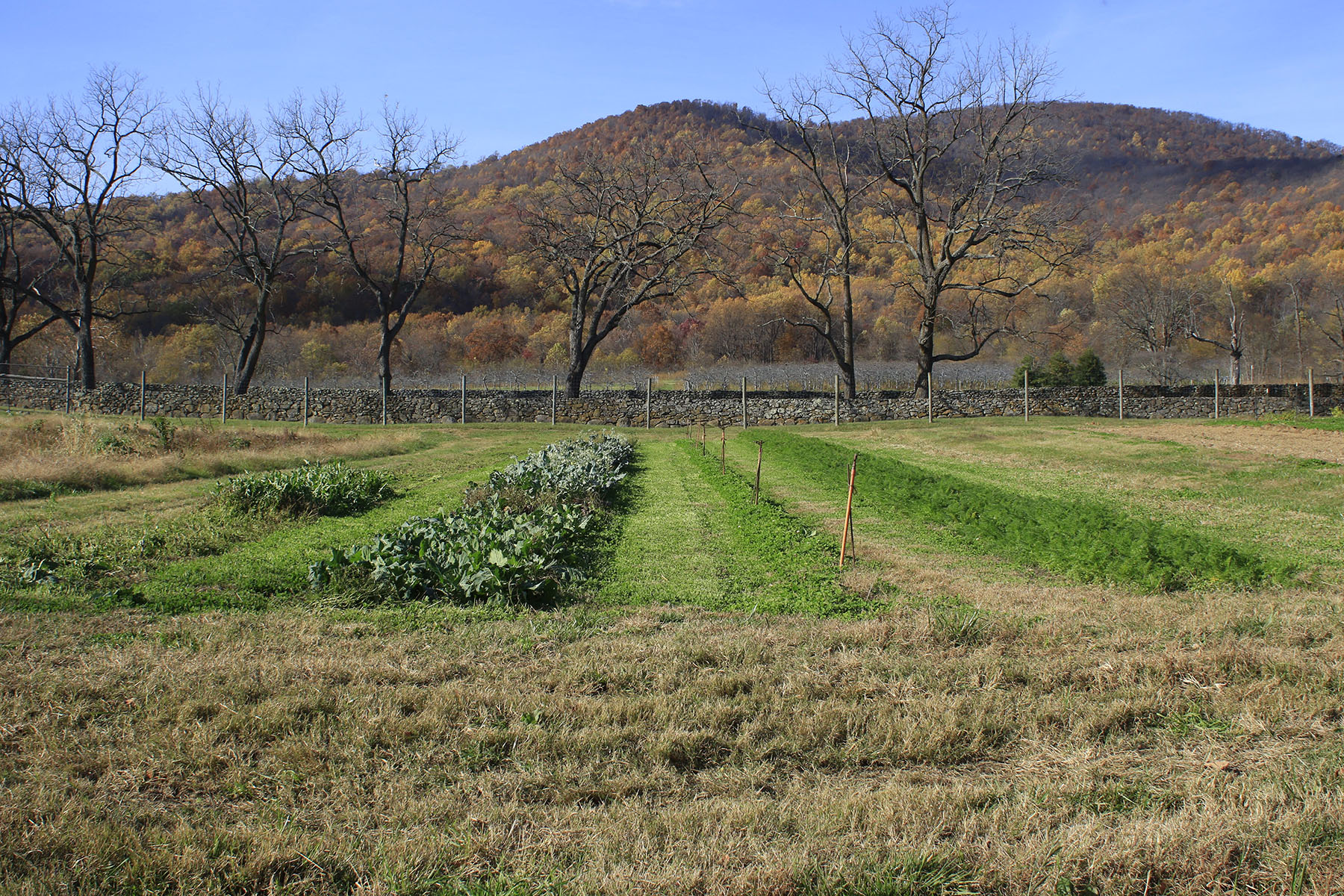
Minimizing Bare Ground
Another of our goals is minimizing as much as possible the amount of bare ground in our growing fields at any one time. We have been transitioning many of our fields into a system where we have permanent white clover beds in between our growing rows. This permanent green space provides a home for native beneficial insects and acts as a nitrogen fixer. With this method, we also only till up beds as we need them, rather than having a whole large block of bare ground all at once which cuts down on the amount of soil erosion.
Bringing Ecology and Wildlife Management into Farmed Spaces
Another of our big goals is minimizing the amount of bare ground in our growing fields. We have been transitioning most of our fields into a system where we have permanent clover beds in between our growing rows. This permanent green space provides a home for native beneficial insects, acts as a nitrogen fixer, promotes a more consistent soil structure, and does a great deal to prevent erosion as most of our fields are in the foothills. One thing that we often try to keep in mind is that our crop pests are almost always more mobile than insect predators. A large bare ground field won’t have spaces for spiders, mantis, toads, snakes, ladybugs, and other predators that need a home to live in, but many of your crop pests can just fly from field to field whenever they want. Having our fields be green rather than brown is many things, but really, it’s like building a bridge from us to all the beneficial critters that we want to live where we farm.
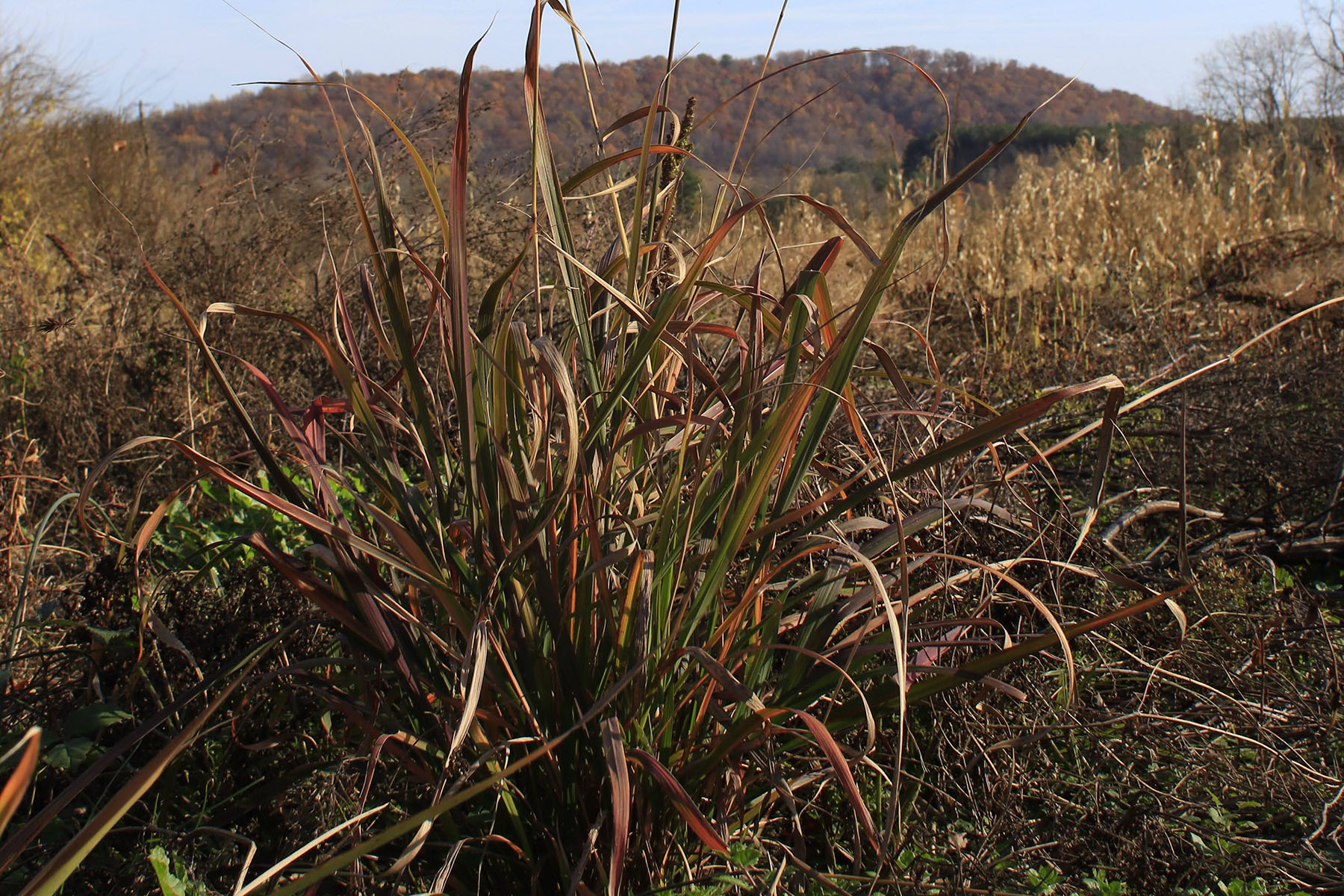
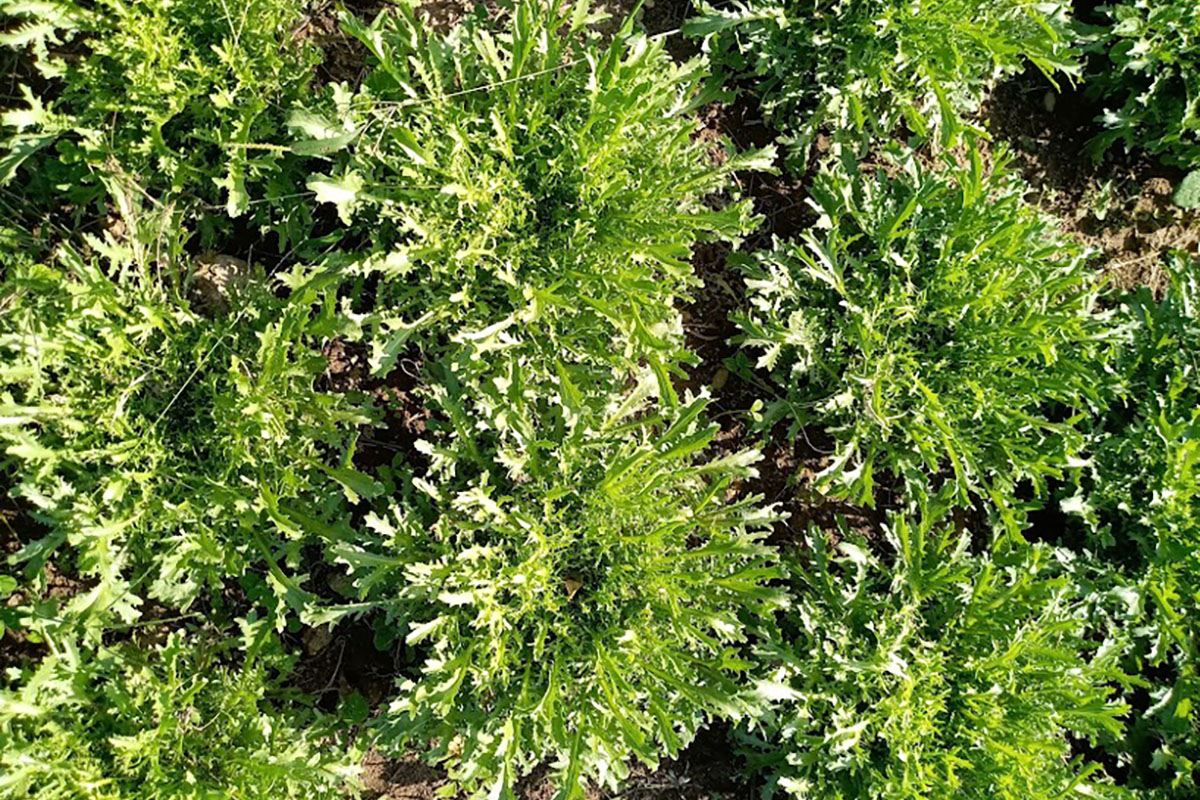
Low-No Chemical Applications
Organic does not mean unsprayed, but it can if we go out of our way to stick to it. In 2022 the Sunnyside team removed all pesticides and sprayed fertilizers from our vegetable production, and that’s the goal. We don’t want to spray and we don’t want to sell sprayed food, and it’s not to say that we would never do it, but what we do is we view spraying anything as an absolute last resort. Even if organic pesticides are sometimes safer for use, something that kills insects will kill all insects, or something that kills moths will kill all moths, and that is a huge price to pay when one of our main goals is to establish beneficial species in our fields. We structure our plantings to have more and smaller generations of plants that are spaced apart from each other, and that way if we do have a pest issue, we can mow one planting to take away food sources for breeding cycles. Also, we want to be as transparent as possible with customers if we do have to spray in the future, mostly because we feel good about what we do, and we’d simply rather you know what you are eating. It makes us no end of happy to leave the farm’s sprayer parked right where it is.
